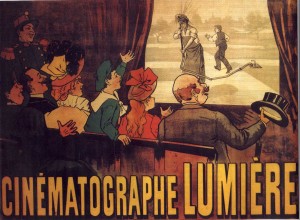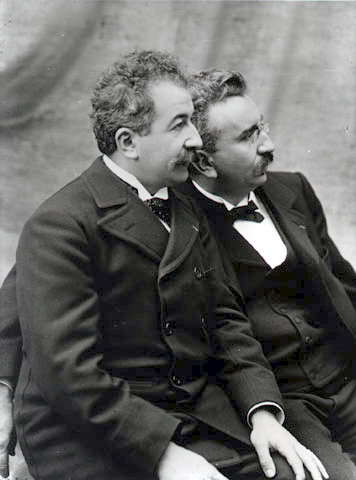In my blog of January 10, I discussed the invention, in 1903, by Auguste Marie Louis Nicholas and Louis Jean Lumière of the Autochrome process. There is a bit more of significance to say about the Lumière brothers. They were, in fact, the earliest film makers.
Their father, Claude Antoine Lumière (1840-1911) ran a photography firm, producing principally the then dominant dry plates. The two brothers entered the firm, Louis as a physicist, Auguste as a manager. To give you an idea of the scale, the Lumière Factory was producing 15 million dry plates by 1894.
Antoine was invited to a demonstration of Edison’s Peephole Kinetoscope in Paris. He returned excited and presented Louis with a piece of Kinetoscope film and the challenge to make it cheaper.
This led to several major patents including: the patent for the use of perforations in the film and the patent for the Cinématographe. The Cinématographe was smaller than Edison’s Kinetoscope and was capable of recording, developing, and projecting the film – an all-in-one device. Significantly, Louis’ device operated like a sewing machine on the principle of intermittent motion.

Figure 2 – advertisement for Cinematographie Lumiere by Marcellin Auzolle (1862-1942) Image from the Wikicommons and in the public domain in the United States
The first public screening of La Sortie de usines Lumière (Workers leaving the Lumière Factory) (click on link to see the movie and other of their short films for yourself) was presented on 22nd March 1895 at 44 Rue de Rennes in Paris. This and their other short films were standardized to 17 m of film and was ~46 seconds long.
There are several individuals who have been credited with the invention of cinema. Without a doubt however, the Lumière brothers played a very significant role both in the invention and popularization of both color photography and the movies.
* Two principal sources were consulted in writing this and I recommend them for further reading: the Early Cinema Website and Wikipedia.

